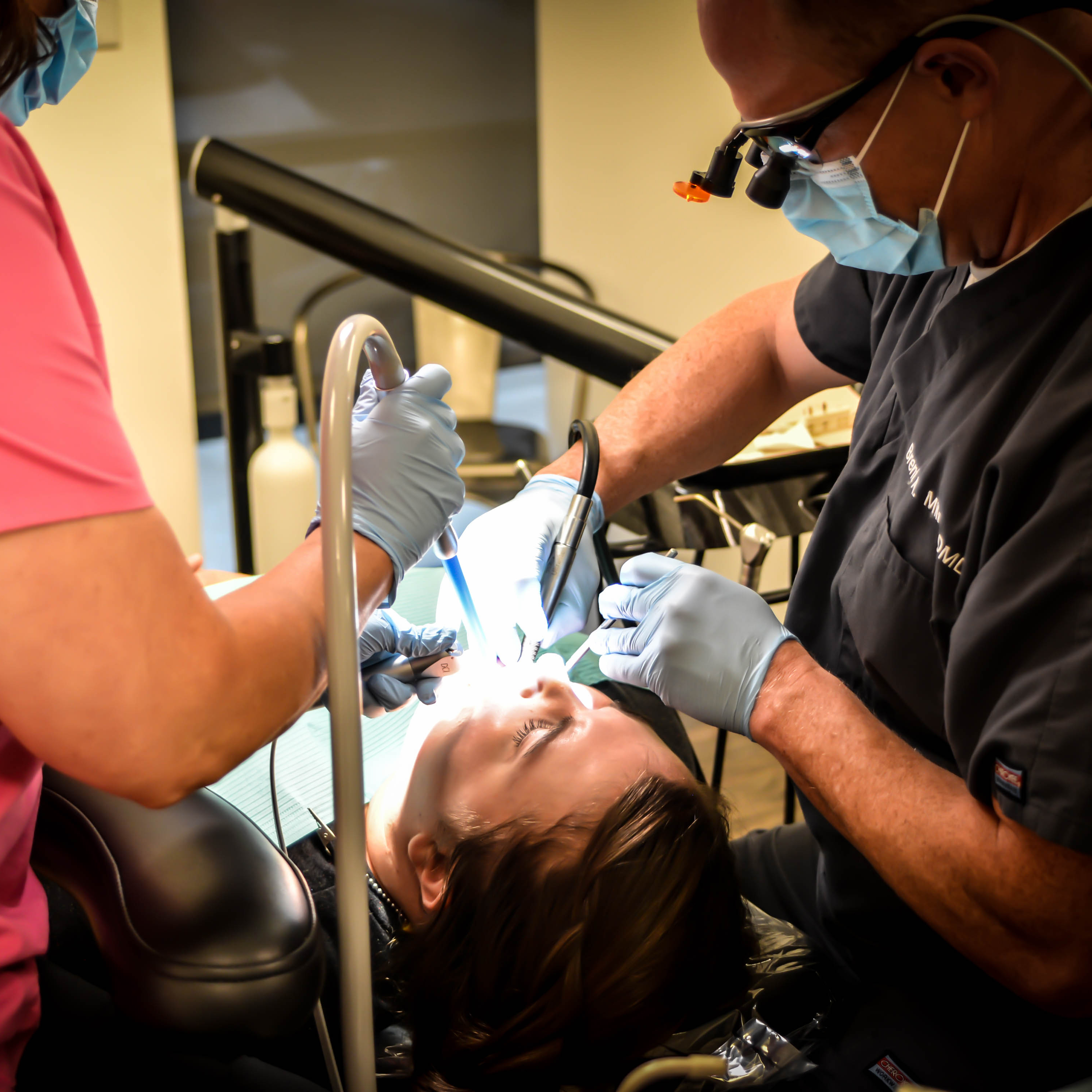Our practice emphasis is on total preventive care for our patients. Total care begins with regular hygiene visits, regular check-ups and education on continued home oral health routines. There are other preventative therapies that we believe in and often recommend. We feel strongly that preventing dental disease is much better, easier, and less expensive that reversing the effects it has on your teeth and mouth.
Regular Prophylaxis
Most people should schedule have a dental cleaning every 6 months. During this visit, one of our dental hygienists will remove plaque and calculus from your teeth, especially from places where your brush can’t reach, such as underneath the gum line and in-between teeth. We will then clean your teeth and apply fluoride to help protect your teeth once you leave the office.
Fluoride is an important advancement in dental and oral health. Studies consistently show that a moderate but consistent exposure of teeth to fluoride helps strengthen and rebuild tooth structure, and helps prevent future decay. Often your insurance company will not cover the cost of the fluoride treatment if you are an adult. However Dr Milne believes in the effectiveness of fluoride and will cover the cost of the treatment if your insurance will not.
If you are due for a dental cleaning, please call our office to schedule an appointment.
Sealants
The grooves and depressions that form the chewing surfaces of the back teeth are extremely difficult (if not impossible) to clean of bacteria and food. As the bacteria reacts with the food, acids form and break down the tooth enamel, causing cavities.
Tooth sealants protect these susceptible areas by sealing the grooves and depressions, preventing bacteria and food particles from residing in these areas and making the surface of the tooth more easy to clean. Sealant material is a resin typically applied to the back teeth, molars and premolars and areas prone to cavities. It lasts for several years but needs to be checked during regular appointments.
Periodontal Therapy and Maintenance
The term “periodontal” means “around the tooth.” Therefore, periodontal disease affects the gums and bone supporting the teeth. Gum, or periodontal, disease is a result of inflammation created by irritants under your gums and can result in tooth loss and bone damage. The infection starts when the gums become inflamed due to bacteria in plaque, a sticky, colorless film that forms on your teeth. While this is often the main cause of periodontal disease, other factors can also be attributed to affecting the health of the gums and bone, including:
- Smoking or Tobacco Use
- Stress
- Genetics
- Pregnancy
- Medications
- Diabetes
- Poor Nutrition
Periodontal disease comes in many forms. Gingivitis is perhaps the mildest form of gum disease. While the gums become red, swollen and bleed easily, there is very little to no discomfort associated at this stage of the disease. If left untreated, gingivitis can progress into periodontitis which is a loss of bone around your teeth. Treatment for periodontitis usually requires more frequent visits to the dental hygienist to keep your bone levels stable and healthy. The unfortunate consequence of untreated periodontitis is ultimately so much bone is lost around teeth they can become loose and fall out. Additionally, modern medical research has found a clear connection between people with periodontal disease and the development of cardiovascular disease. Regular cleanings and examinations are a very simple way to avoid the loss of support for your teeth and keep your mouth healthy




